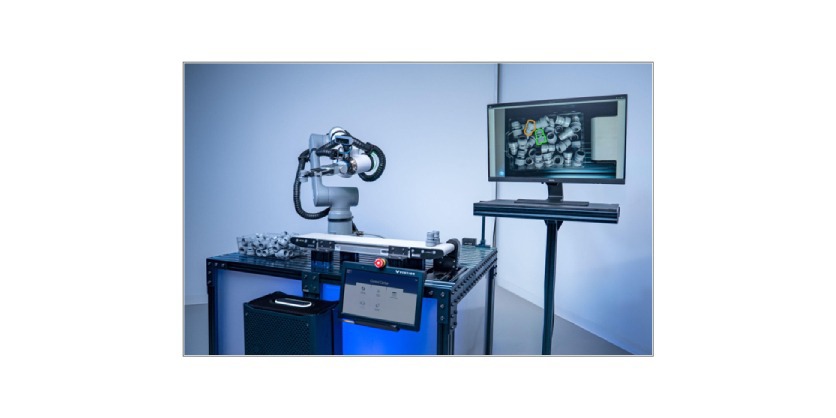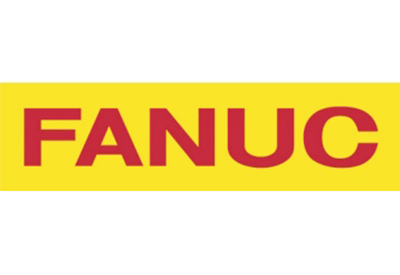Vention Launches AI-Bin Picking Solution at NVIDIA GTC 2025, Marking New Automation Milestone
May 7, 2025

By Krystie Johnston
Vention, a Canadian company on a mission to democratize automation, marked another milestone on that journey at NVIDIA GTC 2025 with the launch of their AI-powered bin picking solution. Using robots for bin picking is not new. But Vention’s solution breaks the mould with its proprietary intelligence and control technology that enables businesses of all sizes to automate faster than ever. And their AI-driven bin-picking technology is slated for commercialization later this year.
Vention’s Bin-Picking Technology
The bane of bin-picking is that robots cannot manipulate unstructured parts as well as a human. Vention’s AI-powered bin-picking solution is a technological breakthrough because it enables a robot to detect, select, pick up, and organize parts – like a human can. It enables the robot to take that next step towards autonomy, where it thinks, reasons, and reacts independently to manage unstructured parts with accuracy, precision, and speed.
“What tends to happen in pick and place machines, machine tending, or bin picking is, there is a lot of uncertainties in the infeed,” says Francois Giguere, CTO at Vention. From machine shops to 3D printing farms and everything in between, the challenge is the same: hundreds of different SKU’s that are all a little bit different. “They are not really well structured when they are placed inside the machine, so the only option is for a human to take these parts, put them on the machine, press GO – and the parts get machined – then take them off, and put them onto another cart for the outfeed. This happens everywhere.”
Vention’s new AI-enabled bin-picking solution introduces intelligence and organization to manage a variety of SKUs without the need for human involvement. “That is the magic of NVIDIA’s FoundationPose,” says Giguere. “You do not have to train the post-estimation model at all. Because it is a foundation model, it was trained with a humungous amount of data at the backend by NVIDIA. We give the system one CAD model, and it generates synthetic images of that CAD model and fine-tunes it. What you get is a model that is very accurate with very little amount of effort. That is the magic.”
It is not really magic. This breakthrough is powered by Vention’s proprietary intelligence and control technology that they have been developing for years, which relies on NVIDIA’s AI-ready hardware and foundational models. More specifically, Vention’s MachineMotion AI controller orchestrates the bin-picking with precision and control, and NVIDIA’s Jetson, or AI processor, delivers the GPU processing needed for reliable autonomy. In recent years, NVIDIA’s GPUs have seen unfathomable improvements in AI compute power, making this the right time for Vention to embark on achieving this automation milestone.
A Mutually Beneficial, Unfolding Collaboration
Vention and NVIDIA’s collaboration began late last year when NVIDIA CEO Jensen Huang highlighted it at COMPUTEX 2024. “The partnership with NVIDIA started when we shopped for single board computers for our next generation motion controller and automation controller MachineMotion AI. We were looking for a computer platform for the new controller, and obviously the NVIDIA Jetson family was a strong contender,” says Giguere. “Then, increasingly we realized that there was a particularly good synergistic situation where we can not only use the hardware, but the software as well.”
MachineMotion AI, powered by NVIDIA’s Jetson technology, has opened the door to AI-enabled and autonomous robotics capable of doing more than ever before because of the vast advancements of computing power. “These models are big memory-wise, but also demanding. We are also at a point where we still see the robot think. We still see it crunching quite a bit of data and computing a lot of big models. So why now? Because we have the computational power to do so. A couple of years ago, this just was not possible.”
It is hard to appreciate the size of these foundational models and what they enable robots to do. In the past, programmers would need to train models with as much data as possible, making automated robotic bin-picking or machine tending time consuming and expensive. And rigid. The collaboration between NVIDIA and Vention breaks this mould apart. “The foundation models are great because they are easily generalizable. You have a generalist model that you specialize in, just like humans. For example, we all know basic math, but some people become engineers,” says Giguere.
It is the specialization of foundational models that allows Vention’s AI-enabled bin-picking solution to be extrapolated easily to other applications very quickly. “You need to have a good, solid base model. And then you specialize it. We rely on the foundation model, we specialize it, and then when we go to the next application, we retake the foundation model, and we re-specialize it,” says Giguere. They demonstrated this at NVIDIA GTC by showcasing a bin-picking solution they developed for McAlpine & Co. Ltd. It took Vention two or three months to develop the solution – a task that would normally take about a year or two.
A Real-World Example: McAlpine & Co. Ltd.
Vention, as a company, prefers a market pull as opposed to a market push. In other words, they prefer developing a solution for a customer instead of forcing a solution onto them. And they used this approach to work with McAlpine. “We are really quick to take real-use cases and generate value to our customers that is meaningful and tangible,” says Giguere. “We were already selling different systems to McAlpine in the UK, they were already a good customer of ours. And consequently, they came to us with some of their other automation challenges.”
McAlpine approached Vention to help them automate the processing of their high-end plumbing products. A Moen or Kholer of the UK as Giguere describes them, McAlpine had tried twice – unsuccessfully – to automate their production. “We started looking at their parts and their geometries, and how we could build a system for them. When you are building something real, you know that, if you have a solution, it will generalize to other customers as well,” says Giguere.
This approach is working well for Vention, and their customers. Giguere says that they have other customers they are working with to build similar solutions for, as they did with McAlpine. “If I can make a machine for them, I can likely make a machine with similar capabilities for other customers. We like to be rooted in reality and pragmatism, so that is why we started with McAlpine.” He adds that the ROI varies, but typically, payback is less than a year for a factory that runs two shifts, five days a year.
More Information
If you are interested in learning more, you can reach out to Vention to see how they can help you with your automation challenges.
Related Story
Vention Introduces AI, Making Adoption of Automation Easier
Vention has been on a mission to democratize automation since 2016. Etienne Lacroix, Founder and CEO of Vention, realized he could leverage software and technology to productize automation, making it more accessible to everyone. While working as an engineer and integrating systems for manufacturers, he noticed added costs and time delays occurred when automation was approached on a project-by-project basis. He saw what he calls ‘orphaned machines or code,’ and distinct variances between machines, so he started Vention to address this discord.




